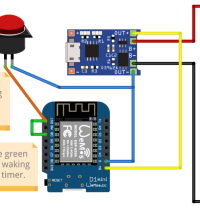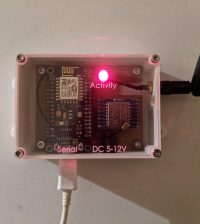- makeITcircular 2024 content launched – Part of Maker Faire Rome 2024Posted 2 weeks ago
- Application For Maker Faire Rome 2024: Deadline June 20thPosted 2 months ago
- Building a 3D Digital Clock with ArduinoPosted 7 months ago
- Creating a controller for Minecraft with realistic body movements using ArduinoPosted 7 months ago
- Snowflake with ArduinoPosted 8 months ago
- Holographic Christmas TreePosted 8 months ago
- Segstick: Build Your Own Self-Balancing Vehicle in Just 2 Days with ArduinoPosted 8 months ago
- ZSWatch: An Open-Source Smartwatch Project Based on the Zephyr Operating SystemPosted 9 months ago
- What is IoT and which devices to usePosted 9 months ago
- Maker Faire Rome Unveils Thrilling “Padel Smash Future” Pavilion for Sports EnthusiastsPosted 10 months ago
A Quick Rundown on Adafruit’s Feather Ecosystem

Adafruit began their Feather ecosystem endeavor last year with the introduction of the Feather 32u4 Basic Proto, a tiny (51mm×23mm×8mm) development board outfitted with an ATmega32u4 SoC, 20 GPIO pin-out and an onboard prototyping section. What made the board unique was its integrated battery charger (for LiPo batteries), making it a portable board that could be used anywhere.
Since then, Adafruit has released over a dozen different renditions to their Feather ecosystem, each with their own different features. What’s more, they can be used as stand-alone modules or connected together for additional functionalities. Most of the boards feature the same base hardware in terms of microcontrollers, form factor, rechargeable battery and proto-board, however each feature a unique hardware addition that sets them apart from the rest.
For example, the Feather 32u4 Adalogger has an integrated SD card slot to store information; the 32u4 Bluefruit LE offers Bluetooth connectivity and the HUZZAH features built-in Wi-Fi thanks to an ESP8266 Wi-Fi add-on module. The Feather ecosystem also features Wings, which are additional hardware modules that connect to the Feather boards via pin-out and include everything from LED displays to radio modules as well as relays (latching, power, etc.), stepper and DC motor control boards. The Feather ecosystem lets users sort through and pick the board that best suits their application. There is already a large fan base among makers using the ecosystem and created some interesting projects. More about the specific boards after this link
See here more application examples: A Quick Rundown on Adafruit’s Feather Ecosystem















